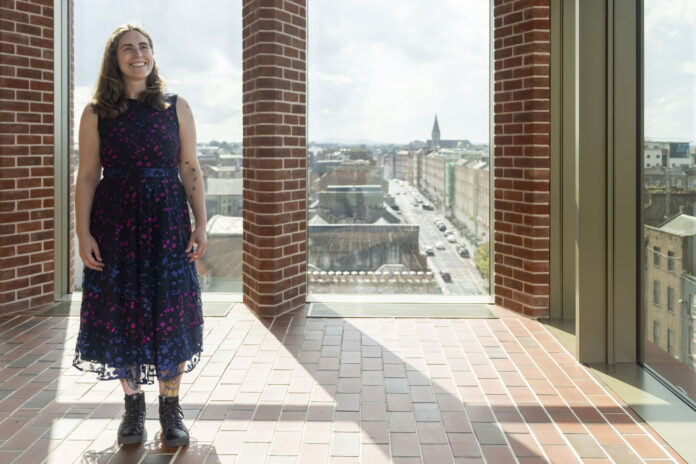
ALTHOUGH technically born in Sligo, Lola Montez was in her own words a Limerick Lady. When she appeared as a witness in a New York court case in 1858, she introduced herself as being born Eliza Maria Rosanna Gilbert in “the beautiful town of Limerick”. Asked her exact date of birth, she responded, in a usual fashion for an actor who prized youth and beauty, “I cannot tell; I wasn’t present when I was born”.
Lola had a constant affinity for Limerick and would refer to it as her place of birth to friends as well as the press. It was even inscribed on her headstone. Although the daughter of a County Limerick woman, her grandfather was Charles Silver Oliver, a former High Sheriff of Cork and Member of Parliament for Kilmallock in County Limerick.
Lola’s parents, Ensign Edward Gilbert and Eliza Oliver, married on April 29, 1820. She was born in February 1821 in Grange, County Sligo, and her family moved to India soon after.
Following her father’s death shortly after their arrival in India, Lola’s mother remarried, and she was sent back to Britain for her education. She exhibited a mischievous temperament moving through various schools in Scotland and England.
At 16, she eloped with Lieutenant Thomas James, but the marriage ended in Calcutta, India.
After her marriage ended, she reinvented herself as a dancer, adopting the stage name Lola Montez. Her London debut as “Lola Montez, the Spanish dancer” in June 1843 was controversial, and she moved to continental Europe, achieving success in Paris and Warsaw.
Courting controversy
More than one of her lovers met suspicious ends and even those she associated with were left with stories of Lola. The famous pianist Franz Liszt, who once performed in Limerick, met Lola at a party. Impressed by the musician, she stood on a table and decanted a cauldron of soup over his head.
In 1846, she arrived in Munich, where she became the mistress of King Ludwig I of Bavaria, who made her Countess of Landsfeld. Her influence over Ludwig and her political actions made her extremely unpopular, leading to Ludwig’s abdication in 1848. Montez fled Bavaria, marking the end of her political influence, but not her fame.
Lola Montez toured the United States from 1851, performing as a dancer and actress. She later travelled to Australia, where her performances, including the infamous Spider Dance, caused scandals.
In 1856, after reading a bad review of her performance in The Ballarat Times in Australia, she attacked the editor, Henry Seekamp, with a whip. Afterwards, Montez sued Seekamp for slander and he sued her for assault. Both claims were dismissed

She returned to the United States where she set up her home, publishing a book, the wonderfully named “The Arts of Beauty, Or, Secrets of a Lady’s Toilet: With Hints to Gentlemen on the Art of Fascinating”. Lola took this book on tour, reading excerpts to a captivated audience.
In 1858, she returned to Ireland on her whirlwind tour, speaking both on her book and on “America and its people”.
It was noted that she was “most anxious to visit Limerick, her birthplace, which she left as a mere child”.
Arriving from New York to Galway in November that year, she stopped in Limerick, Dublin, Cork, Waterford, Belfast, and Galway.
‘A strong woman … she would tell you that herself’
The editor of the Galway Vindicator wanted to assure readers that “her bearing was quite in reverse of that high-flying horsewhipping character which some of our ‘best public instructors’ have been accustomed to represent her as the type of”.
The editor wrote that Lola was “a strong woman… there is no manner of doubt; she would tell you that herself.”
The paper also told of her attire when disembarking, writing that she wore “a flounced black silk dress (sans crinoline)”, a beaver fur mantle, a silk bonnet trimmed in velvet, and a “richly jewelled Maltese cross”.
On December 22, 1858, Lola made her debut and only appearance on a Limerick stage. The venue was set as the Theatre Royal on Henry Street. Earlier in the year, writing alumni Charles Dickens made his Limerick debut on the same stage. Price for admission on the night was set at three shillings for a box, two shillings for the body of the theatre, and one shilling for the gallery.
The Limerick Vindicator painted the scene as Lola “delivered her exceedingly clever and highly interesting lecture … to a large and enthusiastic audience”.
The paper noted that “besides her powers as a critic, satirist, and philosophe, she possess that perfect case and graceful delivery without which the most interesting matter fails to fix the attention of the hearers”.
Although the paper was also very keen to note “for the sake of our lady readers”, Lola’s impeccable style, pointing out that she wore locally produced Limerick lace collar and cuffs with her black velvet dress and beaded silk jacket.
Lola spent the night in Cruise’s Hotel, again following in Dicken’s footsteps, the pair perhaps even slept in the same bed (though months apart). She had a meeting with Mayor Michael Robert Ryan Es., on the morning of her departure. Ryan was wearing two hats, he greeted her as Mayor but conversed as the American Consul.
While speaking with Ryan, Lola mentioned her interested in transatlantic communications. She was particularly keen on establishing an American and Irish postal service. She intended to draw attention to this on her return to the United States. This project was lost in the Atlantic.
Her final years were spent in the United States, where she attempted a theatrical comeback and delivered moral lectures. She died on January 17, 1861, in New York and is buried in Green-Wood Cemetery in Brooklyn, New York. She was only 39 years old but lived a life too far-fetched for the movies.


